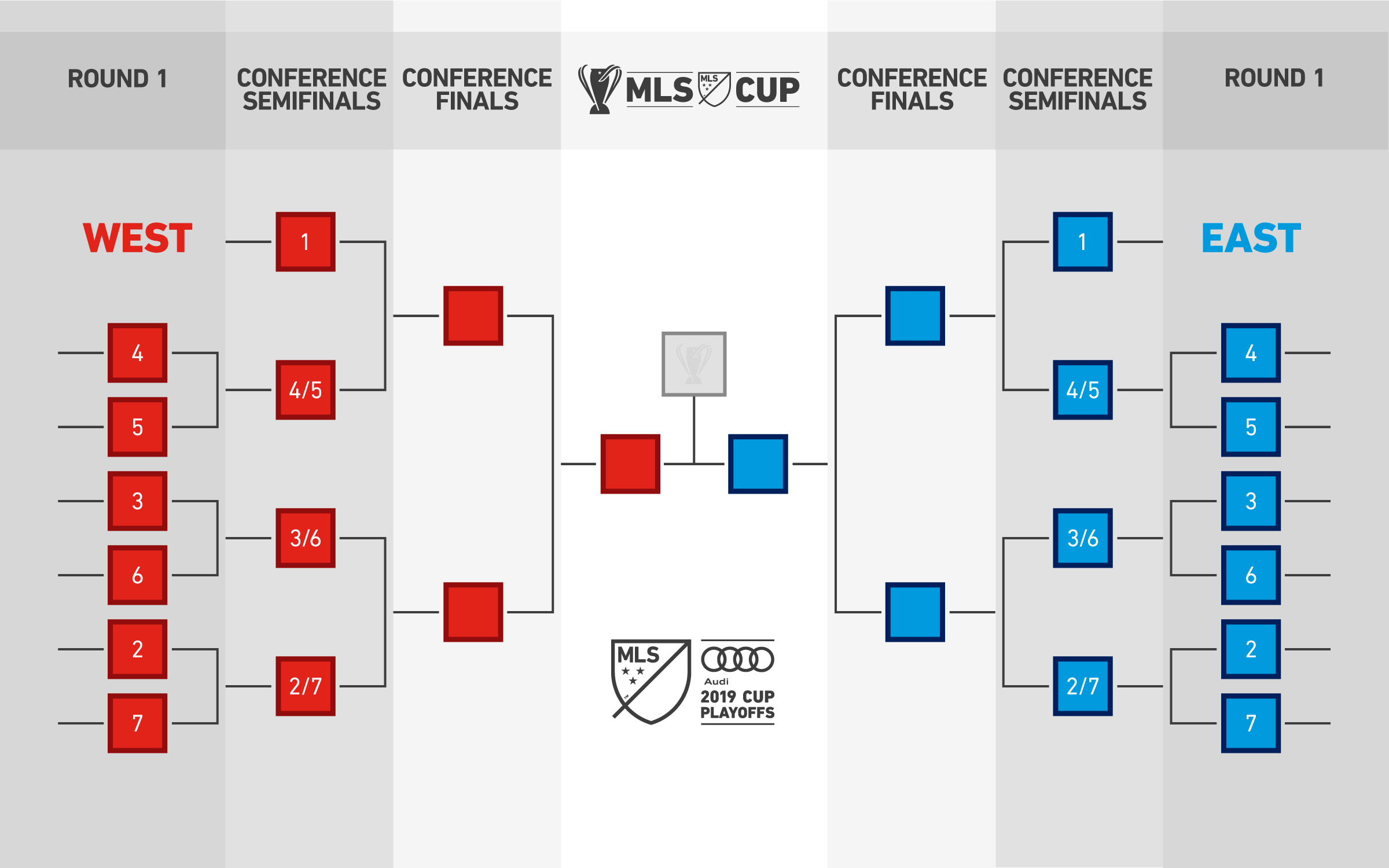
The Major League Soccer (MLS) playoff format is an exciting and dynamic structure that determines the league champion each season. Fans eagerly anticipate this thrilling postseason, where the stakes are higher, and every match counts. With a competitive edge and unique playoff format, the MLS captivates soccer enthusiasts across North America, making every game a must-watch event. The playoff format not only showcases the best talents in the league but also emphasizes the importance of teamwork, strategy, and resilience. As teams battle it out on the pitch, the excitement builds, culminating in a grand finale that decides the coveted MLS Cup champion.
The MLS playoff format has evolved over the years, adapting to the league's growth and changing dynamics. This evolution reflects both the competitive nature of soccer in America and the desire to engage fans through thrilling matches. The current format allows for a mix of established teams and emerging contenders, ensuring that every playoff season brings fresh excitement and surprises.
As we delve deeper into the intricacies of the MLS playoff format, it's essential to understand its structure, rules, and how it affects team standings. By examining the various components of this format, fans can gain a better appreciation for the strategy involved and the significance of each game leading up to the final showdown.
What is the Structure of the MLS Playoff Format?
The MLS playoff format consists of several rounds, culminating in the championship match. Here's a breakdown of the structure:
- The playoffs typically include 14 teams: the top seven from each conference.
- The postseason begins with the first round, where the higher-seeded teams play against the lower-seeded teams.
- Matches are played in a single-elimination format, meaning that the losing team is eliminated from the playoffs.
- The winners advance to the conference semifinals, followed by the conference finals.
- The two conference champions meet in the MLS Cup final to determine the champion.
How Are Teams Seated in the MLS Playoff Format?
Team seeding in the MLS playoff format is determined by their performance during the regular season. The top teams in each conference earn higher seeds, which grants them home-field advantage in the playoffs. The seeding is based on the following criteria:
- Points earned during the regular season.
- Goal differential.
- Goals scored.
- Head-to-head results among tied teams.
What Are the Key Rules of the MLS Playoff Format?
Understanding the key rules of the MLS playoff format is essential for fans to fully appreciate the games. Some important rules include:
- All matches are played in a single-elimination format.
- If a match ends in a tie after regulation time, it goes to extra time.
- If still tied after extra time, a penalty shootout determines the winner.
- Each team is allowed a specific number of substitutions during the match.
Why is the MLS Playoff Format Unique?
The MLS playoff format stands out from other soccer leagues worldwide due to its unique approach to the postseason. Unlike traditional league formats, the MLS prioritizes excitement and unpredictability. Here are some reasons why:
- The single-elimination format creates high stakes and dramatic matchups.
- Home-field advantage plays a crucial role, influencing team performance.
- The inclusion of both conferences fosters rivalries and geographical competition.
- Emerging teams can make surprising runs, adding to the excitement.
How Has the MLS Playoff Format Changed Over the Years?
The MLS playoff format has undergone several changes since the league's inception. Here are some significant changes that have shaped the current structure:
- Initially, the playoffs featured fewer teams and a different bracket format.
- The introduction of the single-elimination format increased excitement.
- Changes in team numbers and conference alignments have affected seeding and matchups.
What Impact Does the MLS Playoff Format Have on Teams?
The MLS playoff format significantly impacts how teams approach the regular season and their overall strategy. Teams aim to secure higher seeds for better matchups and home-field advantage. Additionally, the format encourages teams to peak at the right time, balancing tactics and player management as they gear up for the postseason.
What Should Fans Know About the Upcoming MLS Playoff Format?
As fans eagerly await the upcoming season, understanding the MLS playoff format will enhance their viewing experience. Key things to watch for include:
- Team performances leading up to the playoffs.
- Potential matchups based on current standings.
- How injuries and roster changes affect playoff contenders.
The MLS playoff format is a captivating aspect of the league that keeps fans engaged and on the edge of their seats. By understanding its structure, rules, and unique characteristics, fans can fully appreciate the excitement and drama that unfolds each postseason. Whether you're a die-hard supporter or a casual observer, the MLS playoffs promise thrilling soccer action and unforgettable moments that will leave a lasting impression.
ncG1vNJzZmivp6x7o77EnKKepJxjwqx71aKpmqSmnq%2Bmv5RopKWroKGuurvFn2Sfp6KirrV6x62kpQ%3D%3D